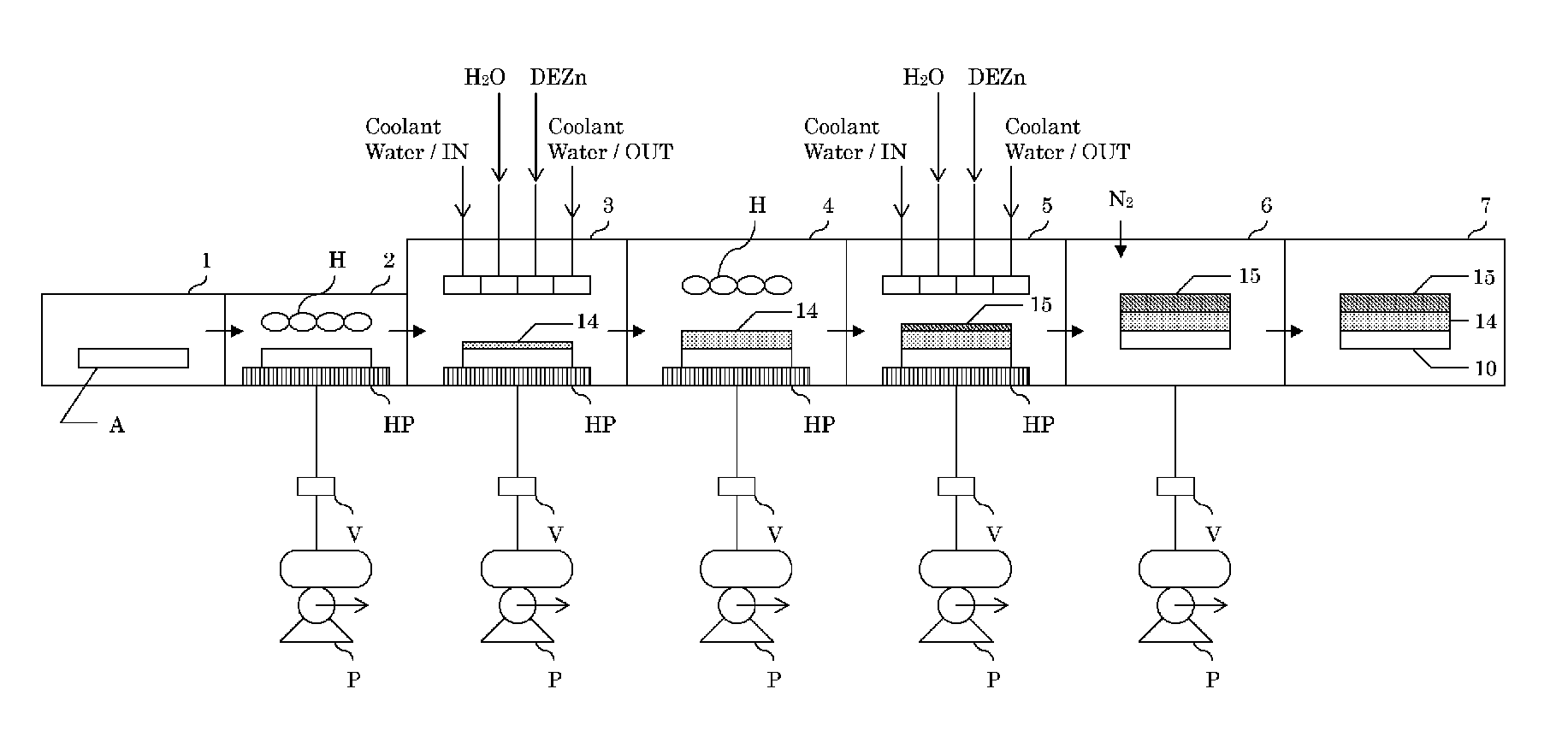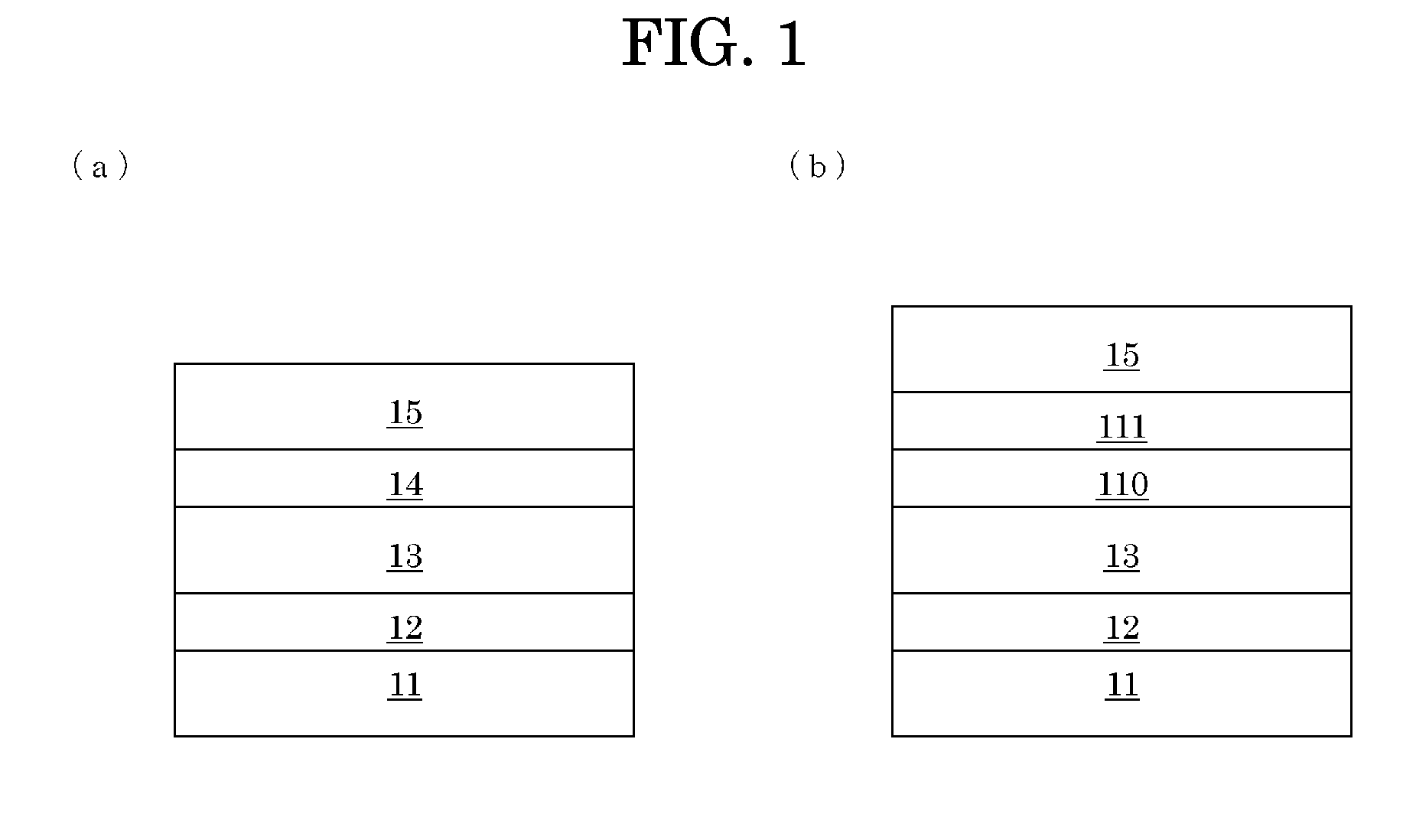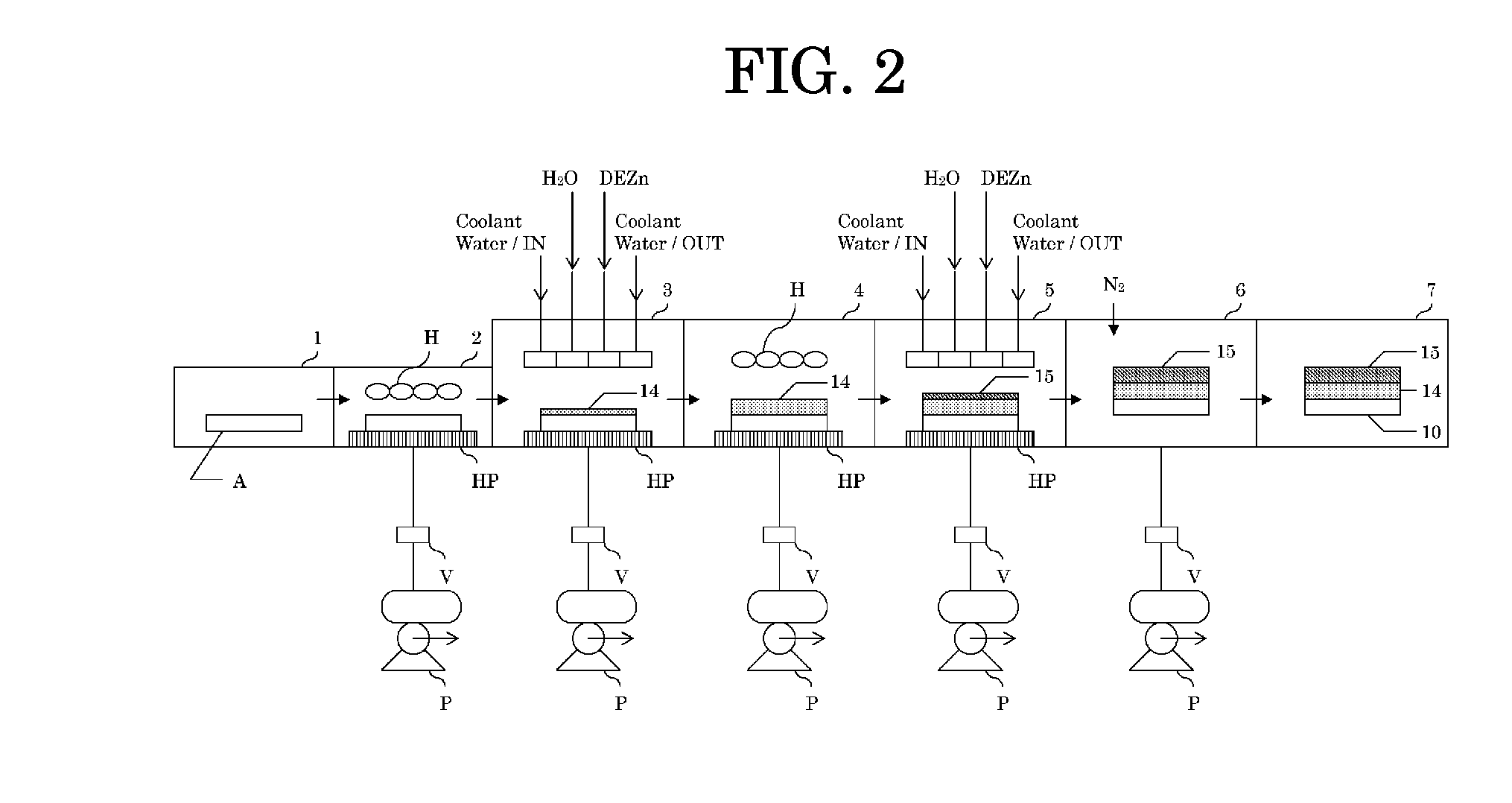Laminated structure for cis based solar cell, and integrated structure and manufacturing method for cis based thin-film solar cell
a technology of cis and solar cells, which is applied in the manufacture of final products, basic electric elements, climate sustainability, etc., can solve the problems of high waste treatment cost and a manufacturing cost of cis solar cells, and the film-forming of stable reactions at a certain point may not be performed, and achieves high production efficiency and buffer layer high resistance
- Summary
- Abstract
- Description
- Claims
- Application Information
AI Technical Summary
Benefits of technology
Problems solved by technology
Method used
Image
Examples
Embodiment Construction
[0080]A laminated structure of a CIS based thin-film solar cell according to this embodiment will be described.
[0081]As illustrated in FIG. 1(a), a CIS based thin-film solar cell 1 according to this embodiment forms a p-n heterojunction device having a substrate structure obtained by laminating a glass substrate 11, a metal back electrode layer 12, a p-type CIS based light absorbing layer (hereinafter, simply referred to as an “light absorbing layer”) 13, a high-resistance buffer layer 14, an n-type window layer (transparent conductive film (hereinafter, simply referred to as a “window layer”)) 15 in this order.
[0082]The glass substrate 11 is a substrate on which the above-described layers are laminated, and a glass substrate such as soda-lime glass, a metal substrate such as a stainless plate and a resin substrate such as a polyimide film are used.
[0083]The metal back electrode layer 12 is highly corrosion-resistant metal such as Mo or Ti having a high melting point and a thickness...
PUM
 Login to View More
Login to View More Abstract
Description
Claims
Application Information
 Login to View More
Login to View More - R&D
- Intellectual Property
- Life Sciences
- Materials
- Tech Scout
- Unparalleled Data Quality
- Higher Quality Content
- 60% Fewer Hallucinations
Browse by: Latest US Patents, China's latest patents, Technical Efficacy Thesaurus, Application Domain, Technology Topic, Popular Technical Reports.
© 2025 PatSnap. All rights reserved.Legal|Privacy policy|Modern Slavery Act Transparency Statement|Sitemap|About US| Contact US: help@patsnap.com



